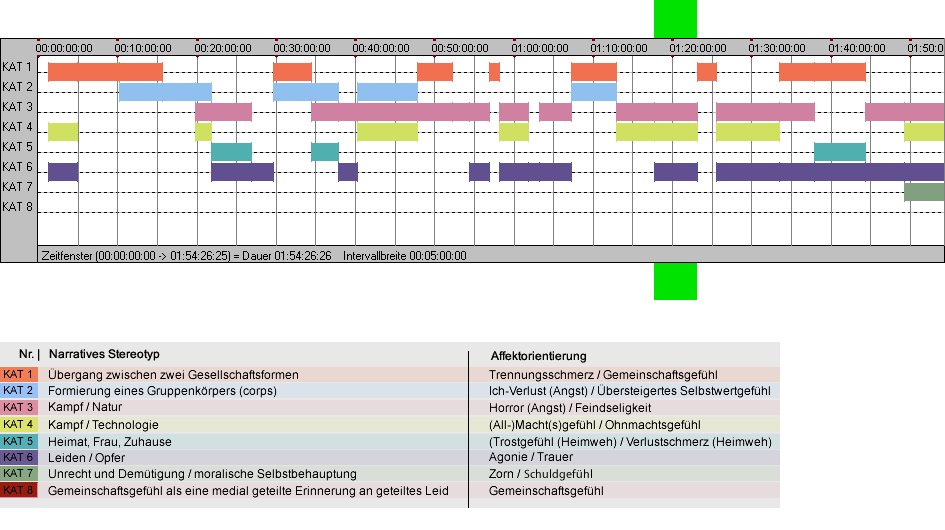Kamikaze*
Classification in categories
- Battle and nature
- Battle and technology
- Suffering / victim / sacrifice


Metadata
Number: 21
Individual analysis: Bataan*
Timecode start: 01:17:40:25
Timecode end: 01:23:10:18
Year of origin: 1943
The scene successively translates the ambivalence of forceful dynamic and strained uncertainty into:
a) a relationship between an unspoken, strangely unmoving activating pole and the movements of the characters triggered by it (>EMU 1);
b) an editing rhythm that creates a physical tension between the weight and dynamics of the airplane, the lethargy of corporeality and its triumphant transcendence (>EMU 2) as well as
c) a division and comparison of these conflicting poles: the pilot who triumphantly merges with his airplane on the one hand and his tense, hopeful and worried fellow soldiers who are chained to the earth on the other hand (>EMU 3).
The sudden resolution of this ambivalence and state of tension through the explosion of the plane and the bridge (>EMU 3) can be seen as a shocking short-circuit of these two established poles, which itself initiates the gestural and spatial movement of another character, Hardy (>EMU 4).
In this scene, heroic sacrifice (>EMU 3) manifests itself as overcoming weight and lethargy (>EMU 2) and proves itself as the final service of one mortal individual body for the group it belongs to, a group previously set in motion (>EMU 1). It is the latter meaning of the relationship of sacrifice to the group that is conveyed in reverse shots of tension and triumph and unfolds in the prominence of quiet and stillness after the explosion as an acoustic and temporal space is opened for the realization and commemoration of the heroic action.
This meaning is then radically subverted in that it is exactly the same kind of unmoving gaze and exactly the same kind of stillness that, in the unit that follows, mark the indifferent presence of nature and the absurdity of a senseless death. This is staged through Hardy’s often interrupted and flagging movements and not least through the absence of his fellow soldiers point of view, which in the previous unit placed the pilot’s action and death in a group context (>EMU 4).
Expressive movement units
01 02 03 04Materials about the scene
Position of the scene in the film





